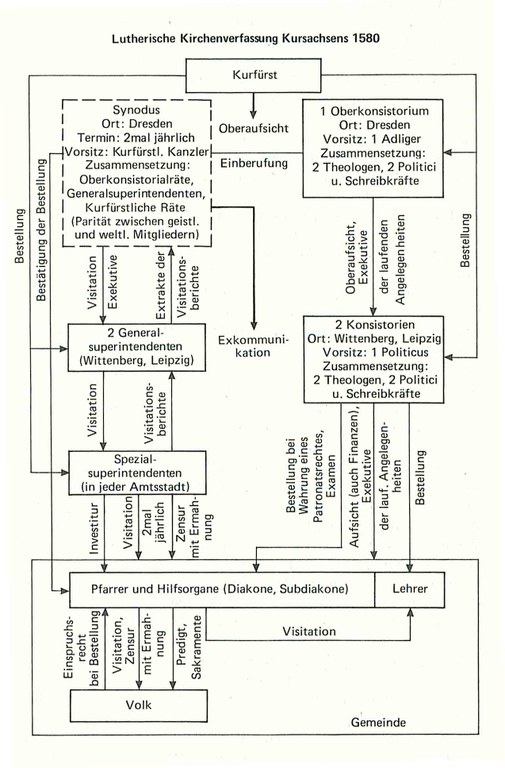Structure of the Lutheran Church in Electoral Saxony in 1580

The Lutheran state churches (Landeskirchen) in central Europe deviated from Luther's original concept of an organisation based on the local congregations. They were integrated into the state administration, at the top of which was the territorial ruler. In the Scandinavian churches, the congregations remained somewhat stronger. The councils of the individual congregations elected their own clergymen and enforced moral standards within their own congregations.
The typical structure of a Lutheran state church (Electoral Saxony), diagram, unknown creator, 1987; source: Jedin, Hubert / Latourette, Kenneth Scott / Martin, Jochen: Atlas zur Kirchengeschichte: Die christlichen Kirchen in Geschichte und Gegenwart, Herder Verlag, 3rd ed., Freiburg 1987, p. 74. With the generous permission of Herder Verlag.